Contents
- Bandeshwar Mandir
- Bhagwati Mandir
- Bharadi Devi Mandir, Anganewadi
- Devgad Fort
- Kunkeshwar Mandir
- Lakshminarayan Mandir
- Pokharbav Siddhivinayak Ganpati Mandir
- Redi Ganapati Mandir
- Shri Dev Rameshwar Mandir
- Shri Devi Navadurga Mandir
- Shri Devi Sateri Mandir
- Sindhudurg Fort
- Vijaydurg Fort
- Vimaleshwar Cave Mandir
- Sources
SINDHUDURG
Cultural Sites
Last updated on 22 July 2025. Help us improve the information on this page by clicking on suggest edits or writing to us.
Bandeshwar Mandir
The Shri Bandeshwar Mandir is located in Banda village, in Sawantwadi taluka, near the Goa-Maharashtra border. It is dedicated to Sri Dev Bandeshwar, who is considered to be another form of Bhagwan Shiv.
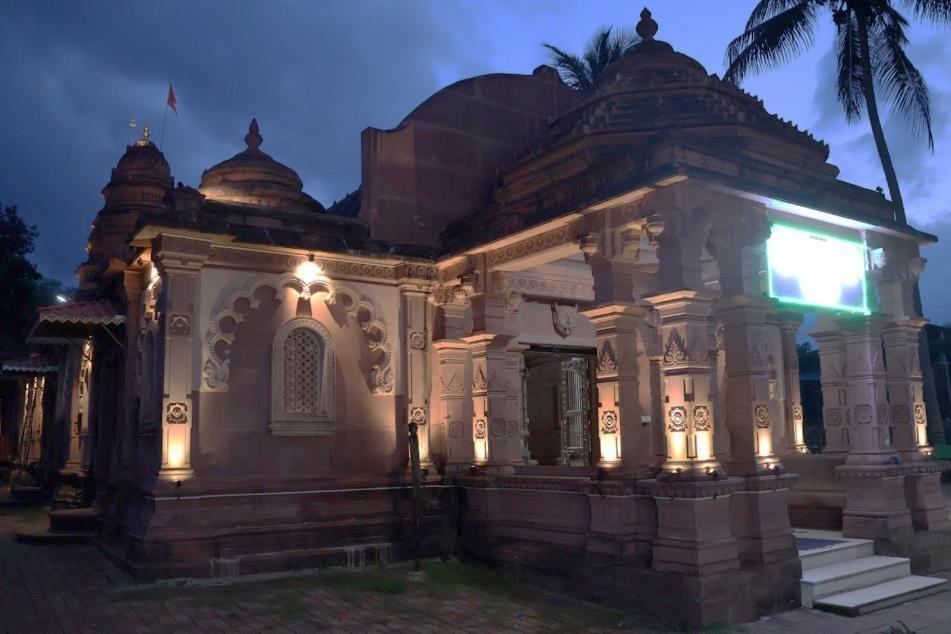
The Mandir is believed to have been established in the 15th century. At its center is a distinctive Shivling, traditionally believed to contain twelve swayambhu lingas.
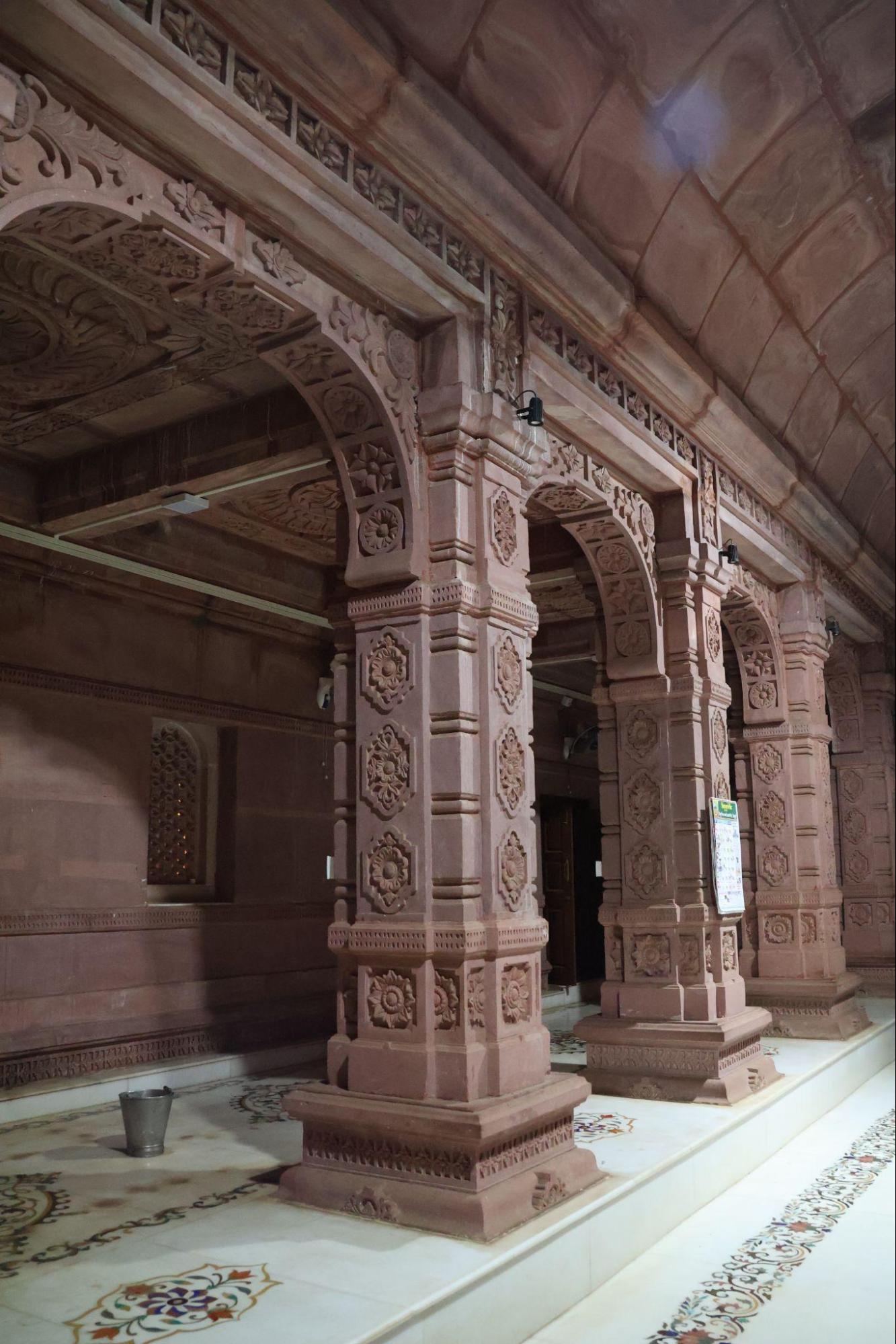
During excavation, one of the lingas is said to have cracked, leaving eleven and a half intact. The main Shivling is located about a foot below the Mandir’s floor and is covered by a circular metallic structure through which consecrated water flows.

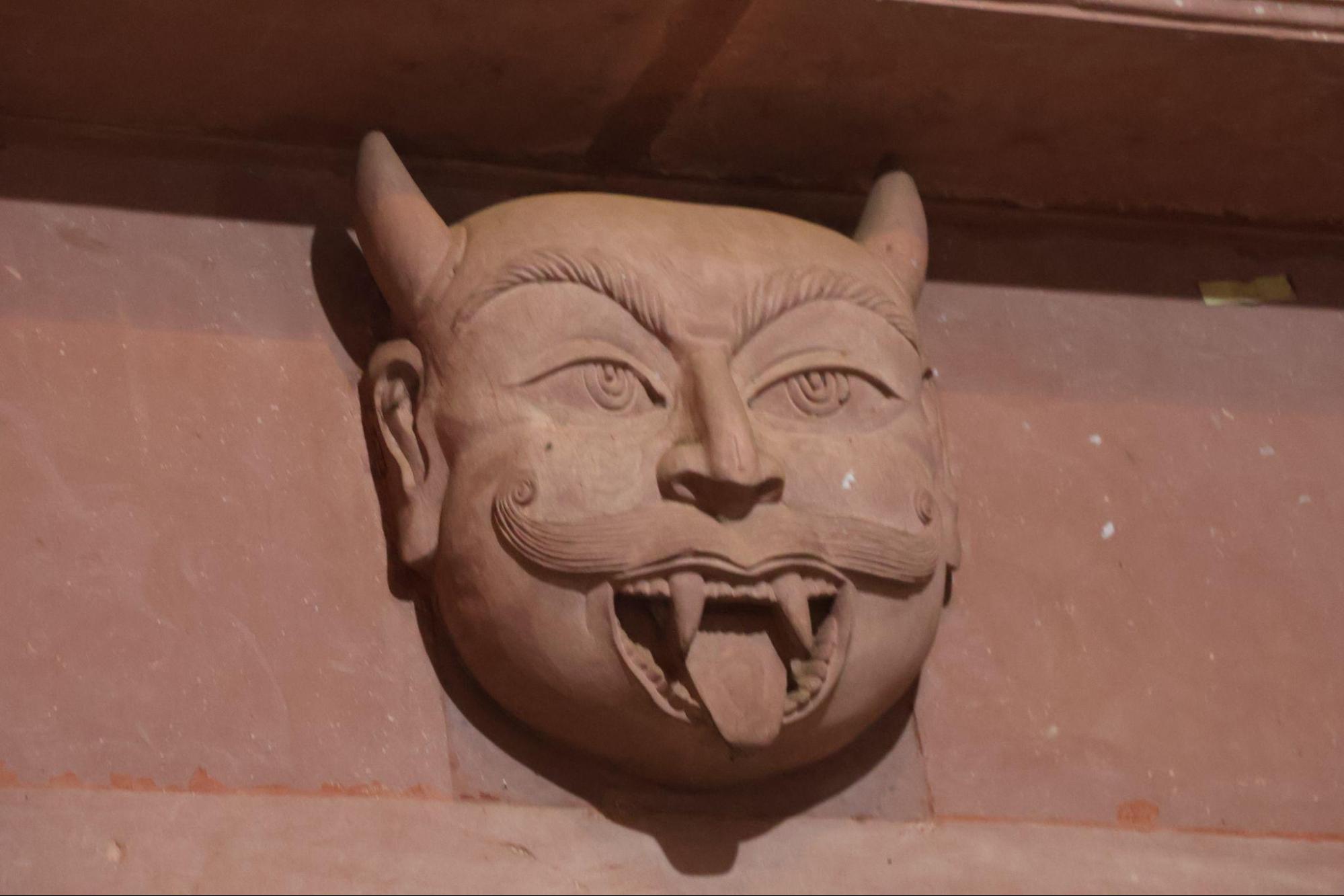
Bhagwati Mandir
The Bhagwati Mandir in Dhamapur, near Malvan, is regarded as one of the oldest mandirs in Sindhudurg district, dating to around 1530 C.E. It was built during the time of the Vijayanagar Empire (c. 1336–1646 C.E.), under the patronage of Mandlik Nagesh Desai, a local administrator connected to the empire’s regional rule.
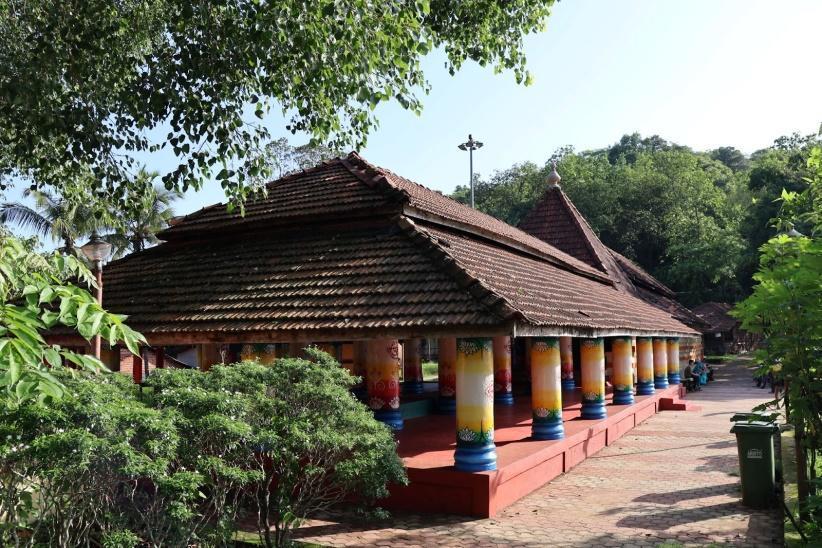
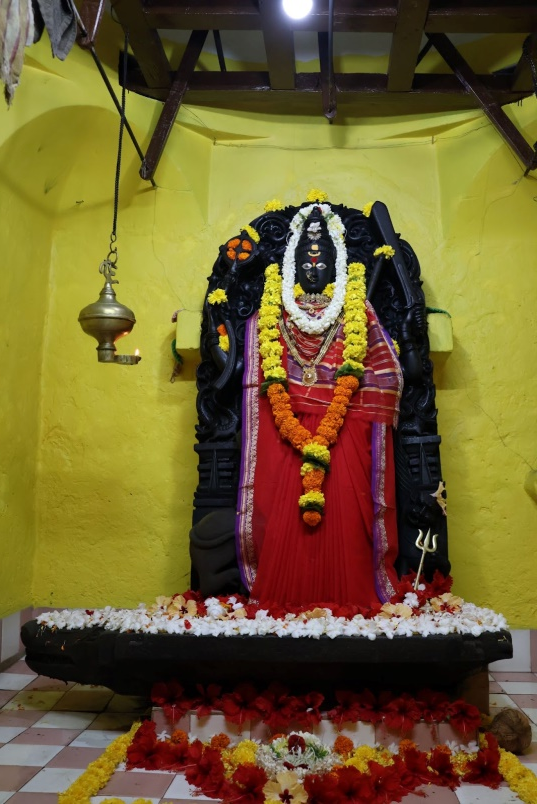
The Mandir is part of a unique cluster, with at least five mandirs located within a 100-metre radius. The nearby Sateri Mandir is another site of longstanding importance in the area.
Bharadi Devi Mandir, Anganewadi
Bharadi Devi Mandir is a jaagrut (active) devasthan located at Anganewadi, a small hamlet of Masure village, about 12 km from Malvan in Sindhudurg district. It is dedicated to Bharadi Devi, who is regarded here as a form of Bhudevi (Mother Earth) and is particularly revered for her wish-fulfilling (navas purti) powers. Bhakts offer vows here and return to express gratitude when their wishes are fulfilled. Due to this deep belief, Bharadi Devi has bhakts from across Maharashtra and beyond, including many public figures and leaders.
![Bharadi Devi Mandir at Anganewadi, Sindhudurg is a renowned jaagrut devasthan dedicated to the wish-fulfilling Devi Bharadi.[1]](/media/culture/images/maharashtra/sindhudurg/cultural-sites/bharadi-devi-mandir-at-anganewadi-s_wq29nN5.png)
According to local legend, the origins of the Devi’s worship go back about 400 years. It is said that a divine stone plaque (swayambhu) was discovered by a local Maratha spy returning from northern campaigns during the reign of Chhatrapati Shahu Maharaj. Following divine visions, the villagers began worshipping the stone, believed to be a form of Devi Sita and Devi Bhavani. Historical accounts mention that even Peshwas Baji Rao I and Chimaji Appa worshipped Bharadi Devi before their campaigns. As a result, the Maratha Empire is believed to have granted 2,000 acres of land to the village.
The annual jatra, held between February and March, draws thousands of devotees. The date is decided by village consensus after a traditional hunt. Rituals begin early with the decorated murti and community meals (Taate Lawane), followed by cultural programs. The fair attracts large crowds, with queues often stretching for kilometres.
Due to the growing number of visitors, queues often stretch for several kilometres. Anganewadi is sometimes called the “Pandharpur of Konkan” due to the sheer scale of participation. Shops, eateries, and amusement rides line the streets during the event, making it one of the most vibrant fairs in the Konkan region.
Devgad Fort
Devgad Fort, also known as Janjira-Devgad, is located where Devgad Creek meets the Arabian Sea. It was constructed in 1705 by Kanhoji Angre during his command of the Maratha navy and served as a coastal outpost and surveillance point.
![Outer wall of Devgad Fort, Sindhudurg, facing the sea, positioned along the edge of the headland.[2]](/media/culture/images/maharashtra/sindhudurg/cultural-sites/outer-wall-of-devgad-fort-sindhudur_G5YugVp.png)
In the early 19th century, it came under attack by the British Royal Navy as part of a broader campaign to dismantle Maratha coastal defences. One such assault was led by Commander Walter Brown of the East India Company. The fort was captured in 1818 and absorbed into British territory. Though partially ruined, its layout and surviving structures still reflect the purpose it was built to serve.
Kunkeshwar Mandir
The Kunkeshwar Mandir, located in the coastal village of Kunkeshwar in Sindhudurg district, is a major site of Shiv worship in the region. It is often referred to as the “Kashi of South Konkan”, drawing large numbers of people, particularly during the Mahashivratri festival.

The Mandir was built in 1100 C.E. by the Yadava dynasty and follows the Dravidian architectural style. Over the centuries, it has undergone several renovations. It is said that Chhatrapati Shivaji Maharaj visited the Mandir and offered prayers there.
There is a very unique legend tied to the Mandir. It is believed that a Persian sailor, caught in a violent storm near Kunkeshwar beach, vowed to construct a Mandir if the seas calmed. When the storm subsided, he kept his promise and built the Mandir; however, fearing backlash from his own community for building a Hindu Mandir, he tragically took his own life afterward.

Lakshminarayan Mandir
The Lakshminarayan Mandir is located in the village of Walaval, in Kudal taluka of Sindhudurg district. Built in the 14th century, the Mandir is distinguished by its use of the Hemadpanthi architectural style and its rare construction entirely from teakwood.
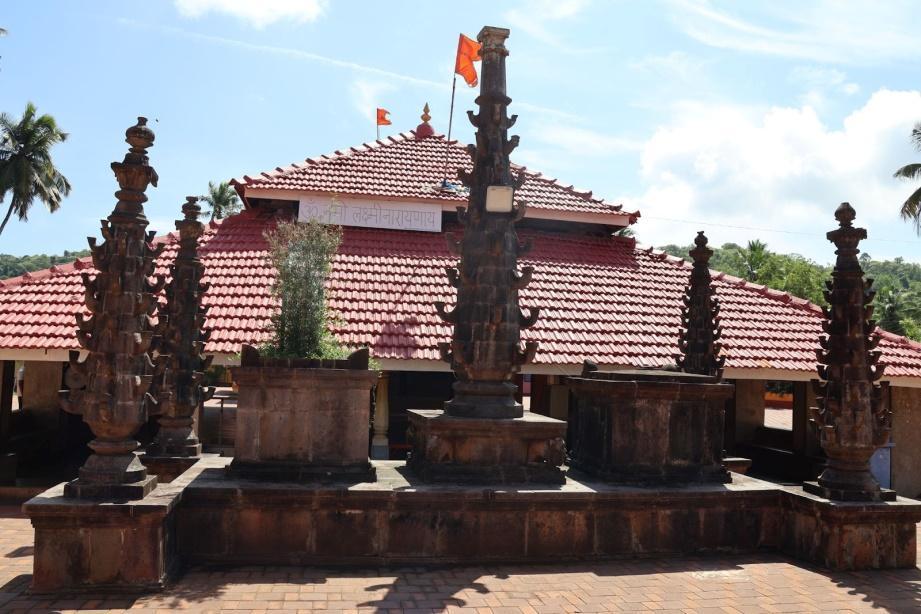
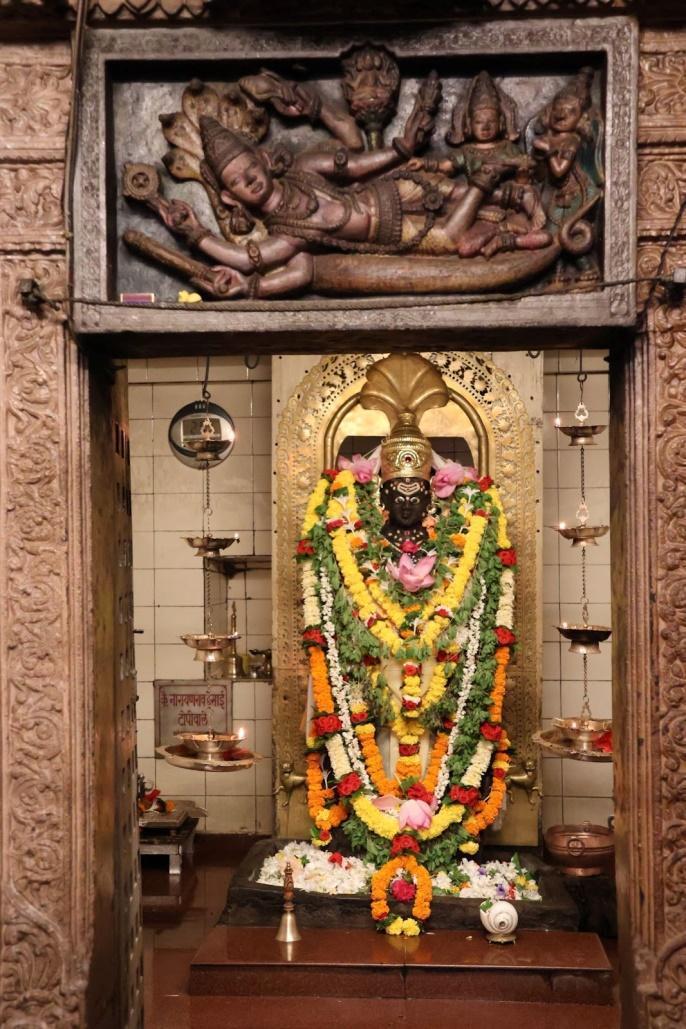
Pokharbav Siddhivinayak Ganpati Mandir
The Pokharbav Siddhivinayak Ganpati Mandir is located in Dabhole village, near Devgad. It is dedicated to Shri Ganesh, and local traditions link its origins to the Pandava era.

The Mandir houses a black stone murti of Shri Ganesh seated with his vahan (vehicle), the mushak (mouse). The murti is chaturbhuj (four-limbed) which is a rare and distinctive form of representation in Ganesh mandirs.

A stairway beside the Mandir leads down to a swayambhu Shiv Pindi, known as the Panchmukhi Shivling. It is believed to have been submerged underwater for centuries. Interestingly, the name of the Mandir is connected to this Shiv Pindi.
According to legend, a pujari named Shri Shridhar Raut had a vision of a man emerging from an ancient well beneath the Mandir, holding a Shiv Pindi. Years later, villagers discovered the well and found the Panchmukhi Shivling, which led to it being called Pokharbav (meaning “well”).

Redi Ganapati Mandir
The Redi Ganapati Mandir is located in Redi village, near the Maharashtra-Goa border in Sindhudurg district. It is known for its impressive six-foot-tall swayambhu murti of Shri Ganesh, making it one of the major yatra sites in the region.
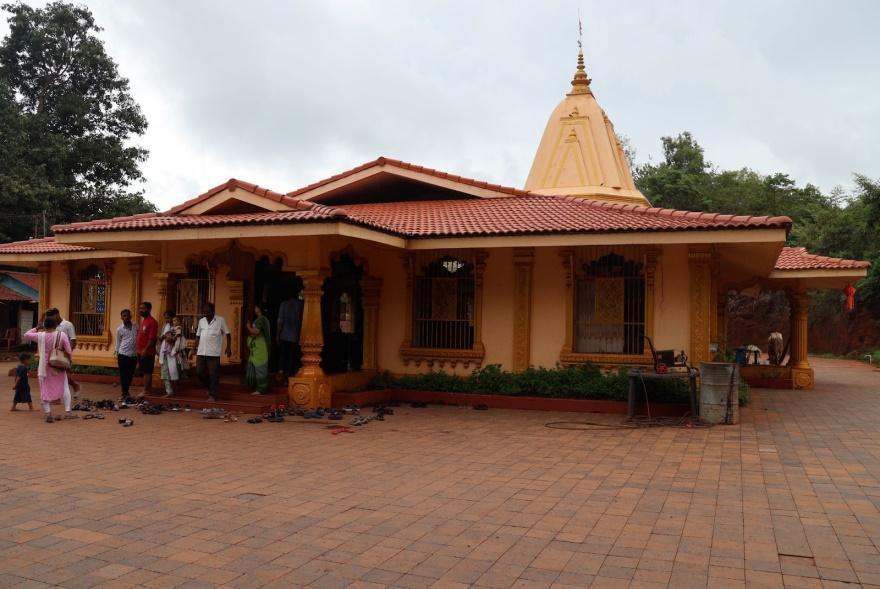
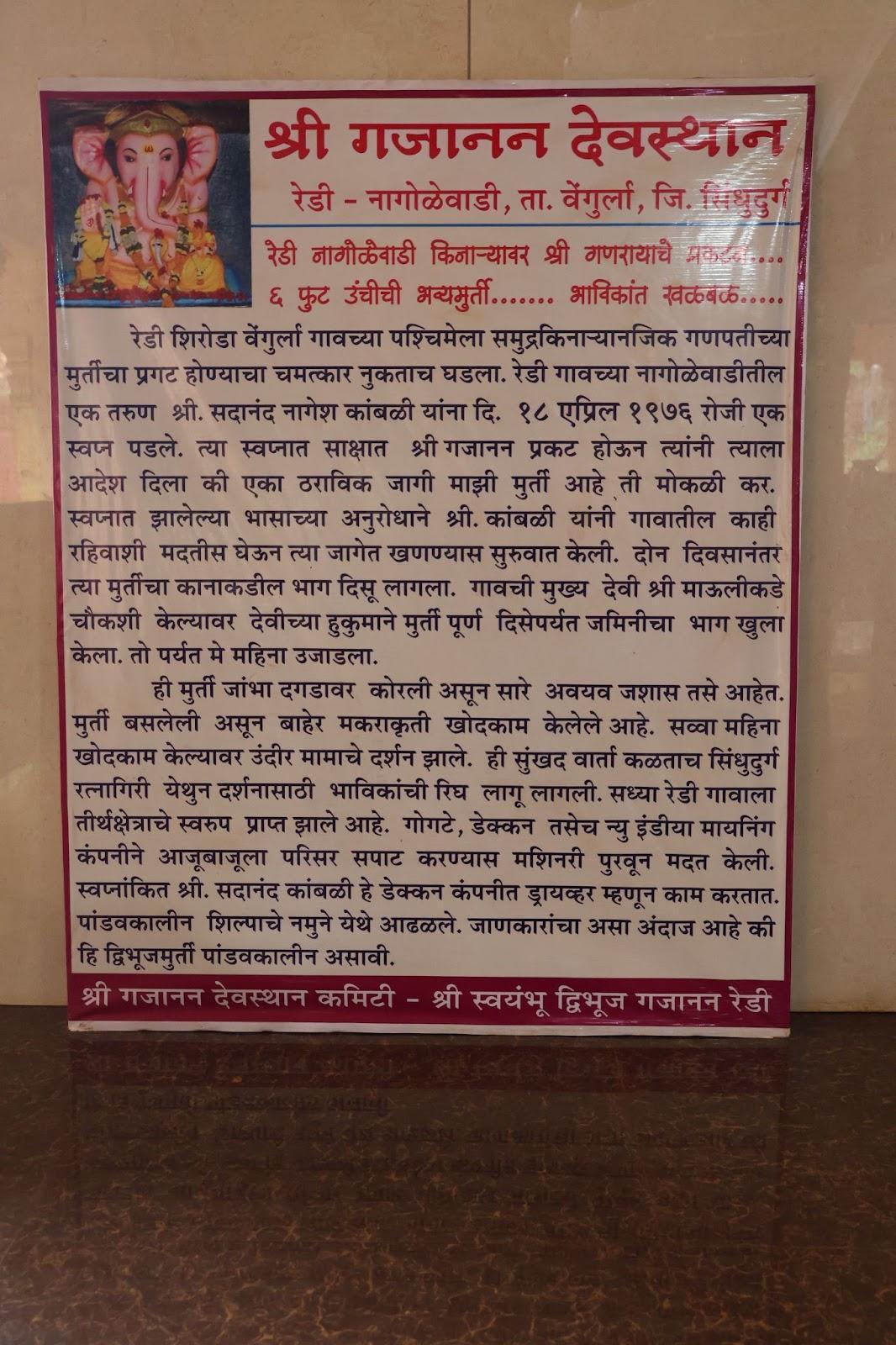
Shri Dev Rameshwar Mandir
Shri Dev Rameshwar Mandir is located in Rameshwar Wadi village in Devgad taluka. It is estimated to have been built in the 16th century and is dedicated to Bhagwan Shiv. The site features a distinctive rock-cut path extending approximately 750 ft. and descending to a depth of 50 ft.

The Mandir is deeply tied to important figures in Maratha naval history. In the early 18th century, Sarkhel Kanhoji Angre (a Maratha Admiral) renovated the garbhagriha (sanctum), enclosing the original Shiv Pindi with finely cut stone. His sons, Sambhaji and Sankhoji Angre, later added a carved stone mandap and a circumambulatory path, shaping the current layout of the Mandir. In 1763, Anandrao Dhulap (Maratha naval chief and governor of Vijaydurg, appointed by Peshwa Madhavrao) oversaw the addition of two gates, one of which was carved through a nearby hill.

Interestingly, the Mandir bears traces of the district’s colonial history. The eastern gate houses a massive bell engraved with ‘1791’, taken from a Portuguese ship captured by the Maratha navy. At the base of the ghat, a mast from the same ship stands tall, marking the entrance to the Mandir, and in some ways, offering a glimpse into the historical dynamics between the Marathas and the Portuguese.
Shri Devi Navadurga Mandir
Shri Devi Navadurga Mandir is located in the village of Redi in Sindhudurg district. Dedicated to Devi Navadurga, a fierce form of Devi Parvati, she is especially revered here as Mahishasuramardini: the slayer of the rakshas Mahishasura. The Devi is believed to have originally been worshipped in the Tiswadi region of Goa as early as the 10th century. During the Portuguese invasions in the 16th century, the murti was moved to Redi for safekeeping, where it continues to be worshipped today. The Devi is considered the Kuladevi (family deity) of many Goud Saraswat Brahmin families in Maharashtra.
![Shikhara (spire) of the Shri Devi Navadurga Mandir in Redi, Sindhudurg district.[3]](/media/culture/images/maharashtra/sindhudurg/cultural-sites/shikhara-spire-of-the-shri-devi-nav_uflv6HH.png)
Though called Navadurga, the murti here depicts the Ashtabhuja (eight-armed) form of Mahishasuramardini. In her hands, she holds a conch (shankha), discus (chakra), club (gada), lotus (padma), trident (trishul), and lance (bhala), while one hand grasps the severed head of Mahishasura, with the rakshas lying beneath her feet.
Two major annual festivals, or jatras, are celebrated at the Mandir: one during Navaratri in the month of Ashwin, and the other on Magha Shuddha Navami. During these occasions, the Mandir and its surroundings are decorated with lamps, and performances of Dashavatari plays are staged through the night. Bhakts consider the Devi extremely powerful, and traditional rituals such as taking kaul (divine guidance) involve using 52 leaves of the Karamali plant.
Shri Devi Sateri Mandir
The Shri Devi Sateri Mandir, located in Vengurla in Sindhudurg district, is dedicated to Devi Sateri, who is revered as the gramdevi (village deity) of the town. She is believed to be a form of Devi Parvati and interestingly is closely associated with the origin of Vengurla’s name.
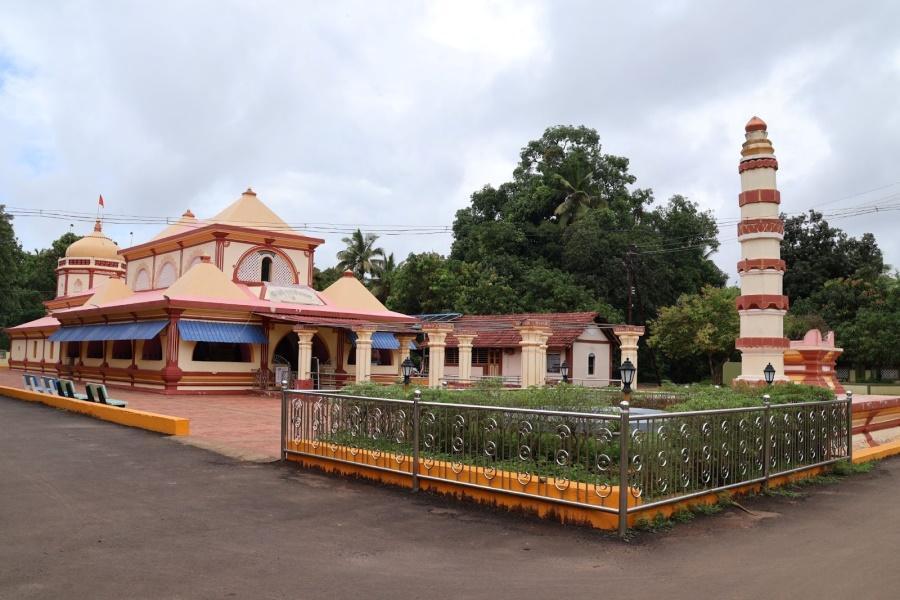
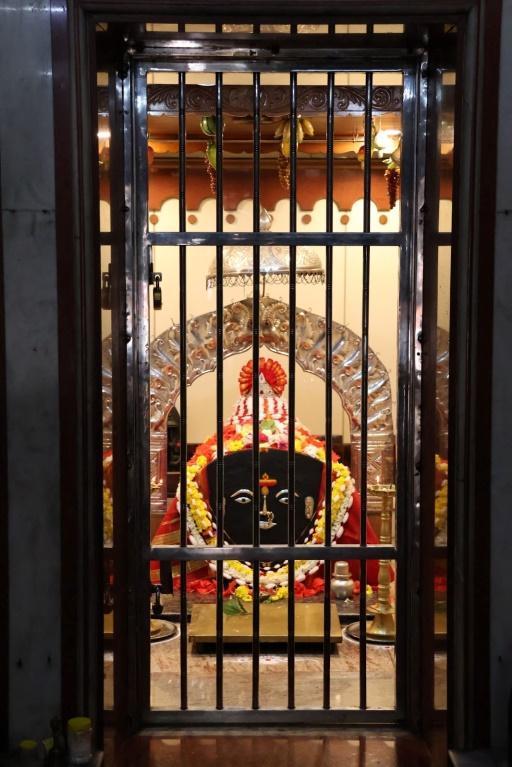
The Mandir’s origin is linked to the nearby village of Ansur, located about six miles from Vengurla. At the time, it is said that Ansur was a prominent settlement in the region, and it was here that Devi Sateri was first enshrined. A man from the Parab clan in Vengurla used to travel to Ansur regularly to worship her. As he grew older and could no longer make the journey, he prayed for the Devi to come to him.
It is said that the Devi appeared to him in a dream and said, “I am at the spot where your cow left its paw.” The man searched and found a small mound growing on a stone where the cow had stepped. He embraced the mound and asked the Devi to stay there. The mound stopped growing, and the Devi was believed to have manifested at that spot. Locals refer to the mound as a “veng” and fascinatingly the name Vengurla is believed to have come from this word, meaning “the place where the veng remained”. A mask (mukhawta) of Devi Sateri was later created and the original mound, considered swayambhu, is still located beneath this in the garbhagriha of the Mandir.
Sindhudurg Fort
Sindhudurg Fort is a historic site built by Chhatrapati Shivaji Maharaj between 1664 and 1667, which holds both strategic and deep importance in the history of the Maratha Empire. Located on Kurte Island in the Arabian Sea, about half a kilometre from Malvan Port and 130 km north of Goa, the fort served as the naval headquarters of the Marathas. Its influence was so enduring that the surrounding district, carved out much later in independent India, was named Sindhudurg in its honour.
![Sindhudurg Fort, surrounded by the vast Arabian Sea, showcasing its formidable architecture.[4]](/media/culture/images/maharashtra/sindhudurg/cultural-sites/sindhudurg-fort-surrounded-by-the-v_IQMGQyJ.png)
The name Sindhudurg is believed to have been derived from two Marathi words: Sindhu (sea) and Durg (fort), meaning "fort in the sea" or "fort facing the ocean." True to its name, the fort was built by Chhatrapati Shivaji to guard the western coastline of his kingdom and establish a naval stronghold.
The construction of Sindhudurg Fort was a significant engineering feat. Notably, it is said that approximately 3,000 workers contributed to its construction. The fort spans 48 acres, with fortified walls that stand 29 ft. high and 12 ft. thick. These walls extend over two miles and are protected by 52 bastions. Some of these bastions feature secret exits, and many include embrasures designed for mounting cannons.
The main entrance to the fort is through the Dilli Darwaja (main gate), which was cleverly designed to blend into the surrounding walls when viewed from a distance. It is believed that Shivaji was very pleased with the fort’s construction and at the request of the fort’s architect, a handprint and footprint of the Maratha king are embedded on a slab within the fort.
![Footprint of Shivaji Maharaj embedded in stone at Sindhudurg Fort, commemorating his presence at the site.[5]](/media/culture/images/maharashtra/sindhudurg/cultural-sites/footprint-of-shivaji-maharaj-embedd_GWsQFZ6.png)
![Handprint of Shivaji Maharaj preserved on a slab within Sindhudurg Fort.[6]](/media/culture/images/maharashtra/sindhudurg/cultural-sites/handprint-of-shivaji-maharaj-preser_pMBTrt8.png)
The fort houses several religious structures, including mandirs dedicated to Hanuman ji, Jarimari Mata, and Devi Bhavani. Uniquely, it is also home to the Shivrajeshwar Mandir, which is regarded as the only Mandir dedicated to Shivaji Maharaj within a fort.
![Sindhudurg Fort is the only fort to house the Shivrajeshwar Mandir dedicated to Shivaji Maharaj.[7]](/media/culture/images/maharashtra/sindhudurg/cultural-sites/sindhudurg-fort-is-the-only-fort-to_BL4WB3v.jpg)
Vijaydurg Fort
Vijaydurg, historically known as Gheria, is a coastal fort located at the mouth of the Vaghotan River, between the present-day Ratnagiri and Sindhudurg districts. It is believed that the site was originally constructed between 1196 and 1206 CE by Raja Bhoja II of the Shilahara dynasty. In 1653, the fort was captured by Chhatrapati Shivaji Maharaj from the Adilshahi Sultanate of Bijapur, under Ali Adil Shah II. It was subsequently renamed Vijaydurg, from the Sanskrit vijay (victory), signifying its role as a strategic conquest.
![Vijaydurg Fort, a key stronghold of the Maratha navy along the Konkan coast.[8]](/media/culture/images/maharashtra/sindhudurg/cultural-sites/vijaydurg-fort-a-key-stronghold-of-_tFEVMnE.png)
Under Shivaji’s reign, the fort was expanded and developed into a key maritime outpost of the Maratha Empire. It later served as a principal base of operations for Kanhoji Angre (1669–1729), the Maratha navy’s admiral (Sarkhel), who used it to resist European naval powers along the Konkan coast. The fort successfully withstood attacks by the British, Portuguese, and Dutch in 1717, 1720, and 1724, respectively. In 1756, control passed jointly to the British East India Company and the Peshwas, and in 1818, it was annexed by the British following the decline of Maratha power.
Remarkably, Vijaydurg is considered the largest fort along the Konkan coast, occupying a naturally defensible position surrounded by the sea on three sides. Its outer wall, constructed of laterite and standing around 33 ft. high, extends nearly 300 ft. into the sea, forming a physical barrier capable of damaging or sinking incoming vessels. A 40 km long shallow creek surrounds the fort, preventing large ships from getting close. The fort’s design and location, in many ways, made it exceptionally difficult to breach, earning it occasional comparisons to Gibraltar.
Vimaleshwar Cave Mandir
The Vimaleshwar Cave Mandir is located in Wada, near Devgad. Dedicated to Bhagwan Shiv in the form of Vimaleshwar, the Mandir is carved from a single black stone and is believed to be between 2,000 and 3,000 years old.
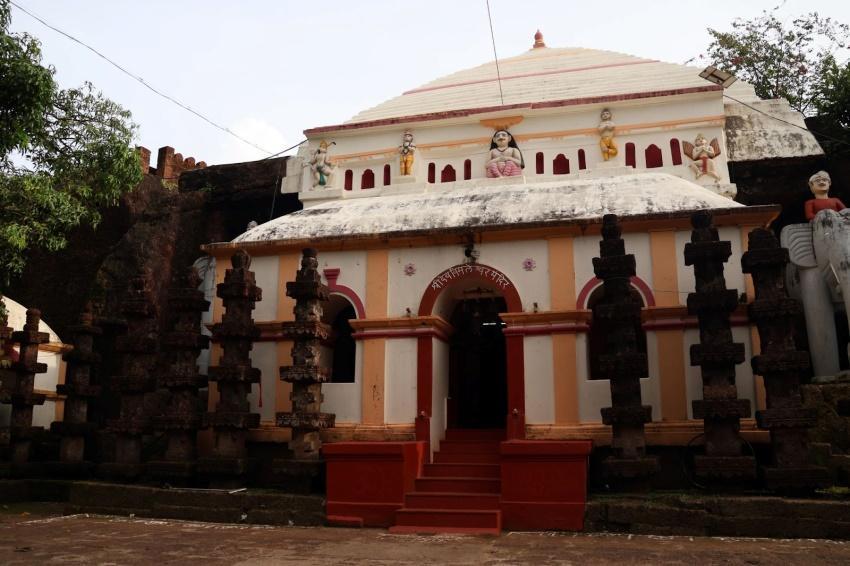
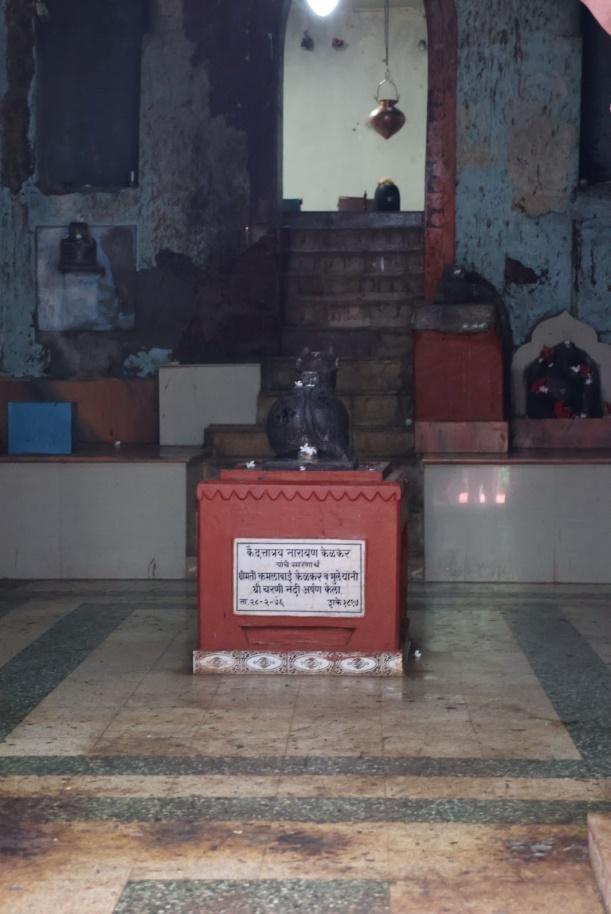
A remarkable feature of the Vimaleshwar Mandir is its unique water management system. The water, milk, flowers, and other offerings placed at the Mandir do not spill outside its garbhagriha, which is an intriguing and surprising phenomenon. These offerings are contained within specific channels called ‘Lanis’, designed to keep them from flowing out of the mandir.
Sources
Aangnechi wadi. 2024. Wikipedia.https://en.wikipedia.org/wiki/Aangnechi_wadi
Ashwini Ashok. 2022. Shri Lakshminarayan Temple, Walaval, Sindhudurg. The Brown Wildflower. www.thebrownwildflower.com/shri-laxminarayan-temple-walaval-sindhudurg/.https://www.thebrownwildflower.com/shri-laxm…
Dinesh SDJ. 2018. Journey to Dhamapur Lake and Bhagwati Temple. Steemit.https://steemit.com/travel/@dineshsdj/journe…
India Netzone. Yashwantgad Fort. Indianetzone.https://www.indianetzone.com/yashwantgad_fort
India.com. Forts: Sindhudurg Fort. India.com.https://www.india.com/travel/tarkarli/things…
India.com. Forts: Vijaydurg Fort. India.com.https://www.india.com/travel/tarkarli/things…
Kokankatta.in. 2018. Devi Navadurga Temple. Kokankatta.https://www.konkankatta.in/2018/01/devi-nava…
Mayekar’s Holiday Home. Kunkeshwar Mandir. Mayekar’s Holiday Home.https://mayekarsholidayhome.in/kunkeshwar-te…
Nisargramya Konkan. 2024. Pokharbav Siddhivinayak Ganpati Mandir, Dabhole, Devgad, Sindhudurg, Maharashtra, India. Nisargramya Konkan.https://www.nisargramyakonkan.com/pokharbav-…
Nisargramya Konkan. 2024. Vimleshwar Mandir, Wada, Devgad, Sindhudurg, Maharashtra, India. Nisargramya Konkan.https://www.nisargramyakonkan.com/tag/vimale…
Rajendra Kerkar. 2021. Last Original Kaavi Art Works Under Threat as Dodamarg Locals Plan Mauli Temple Renovation. The Times of India.https://timesofindia.indiatimes.com/city/goa…
Satish Patankar. 2023. Sateri Devi in Vengurla.Prahaar.https://prahaar.in/2023/08/06/sateri-devi-in…
Satish Patankar. 2023. बांदा शहरातील लोकांचे श्रद्धास्थान स्वयंभू श्री बांदेश्वर मंदिर व भूमिकादेवी. Prahaar.https://prahaar.in/2023/08/27/swayambhu-shri…
Shri Devi Navadurga Temple, Redi. Native Planet.https://www.nativeplanet.com/redi/attraction…
Shri Sateri Devi Jal Mandir. www.avathi.com/place/shri-sateri-temple/7366http://www.avathi.com/place/shri-sateri-temp…
Trawell.in. Devgad Fort. Trawell.in.https://www.trawell.in/maharashtra/ratnagiri…
Last updated on 22 July 2025. Help us improve the information on this page by clicking on suggest edits or writing to us.